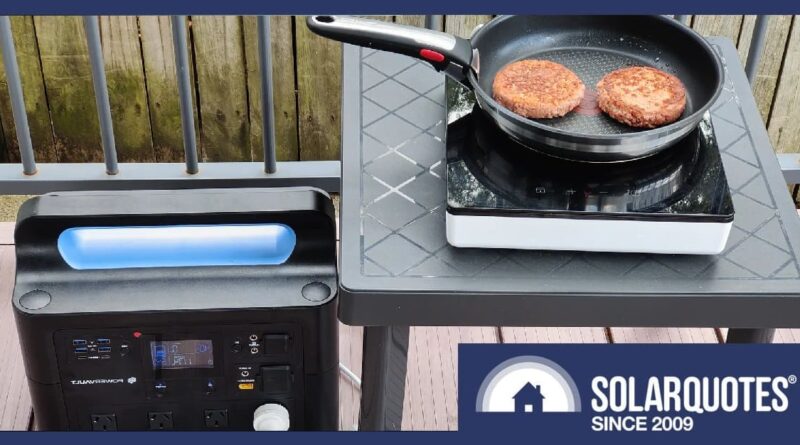Home Backup On The Cheap? A Buyer’s Guide to Portable Power Stations
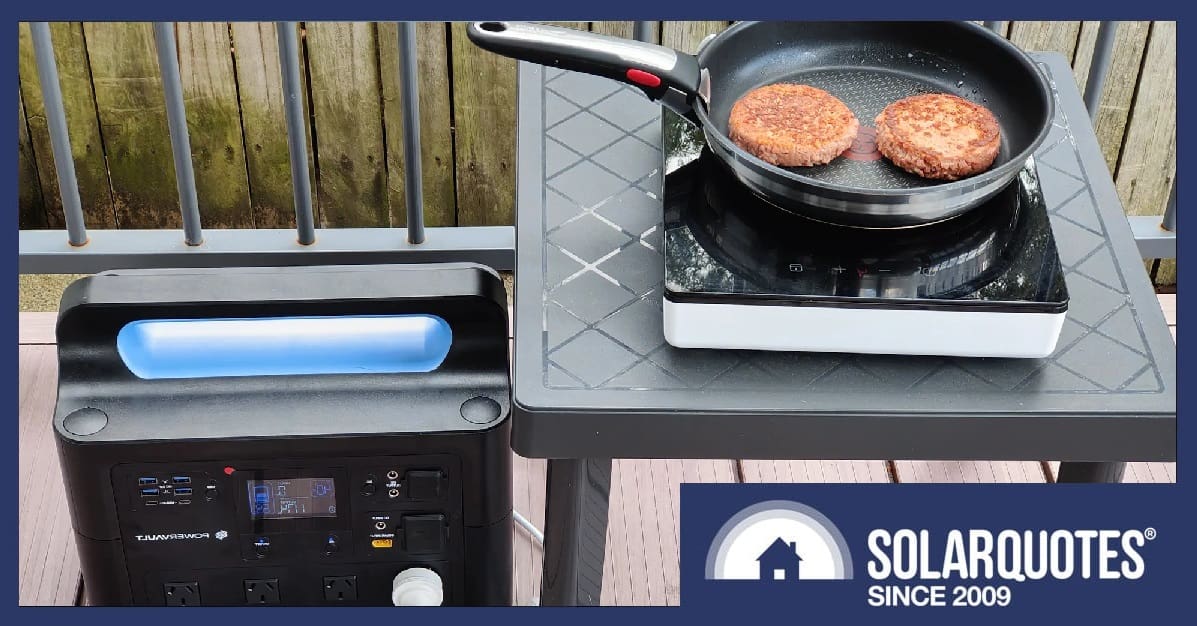
Portable power stations can provide a more affordable solution for backup power during outages, compared to conventional home batteries like the Tesla Powerwall.
Home battery storage works well with solar power to reduce your power bill. However, a Tesla Powerwall home battery will cost about $15,500, including installation.
But can you spend a fraction of that and still power your home essentials through short blackouts using ‘portable power stations’?
Portable Power Stations
Instead of brands like Tesla, BYD and Sungrow, which dominate the fixed home battery storage market, the big players in the portable battery station sector are quite different, such as Anker and Ecoflow.
Portable power stations are not permanently connected to your home switchboard like a Tesla Powerwall.
They can be placed anywhere in your house and taken elsewhere via your car boot to use on holiday, at a picnic or worksite (as long as it doesn’t rain as they are not waterproof).
Think of them as a really big version of the power bank many people keep in their backpacks or handbags to recharge a flat smartphone battery.
The key differences are that a portable power station has:
- much more battery storage capacity,
- a wide variety of power outlets, not just a USB port and
- can usually be recharged from either an ordinary power socket, a 12V power supply such as your car or solar panels connected directly via XT-60 connector.
Real Life Portable Power Station Test
My local grid distributor, Ausgrid, unintentionally created the perfect opportunity to test how a portable home battery would handle an extended blackout by warning me of an 8-hour planned outage while they worked on the power poles in my street.
Luckily, Anker lent me a 757 PowerHouse portable battery to test during this grid power outage.
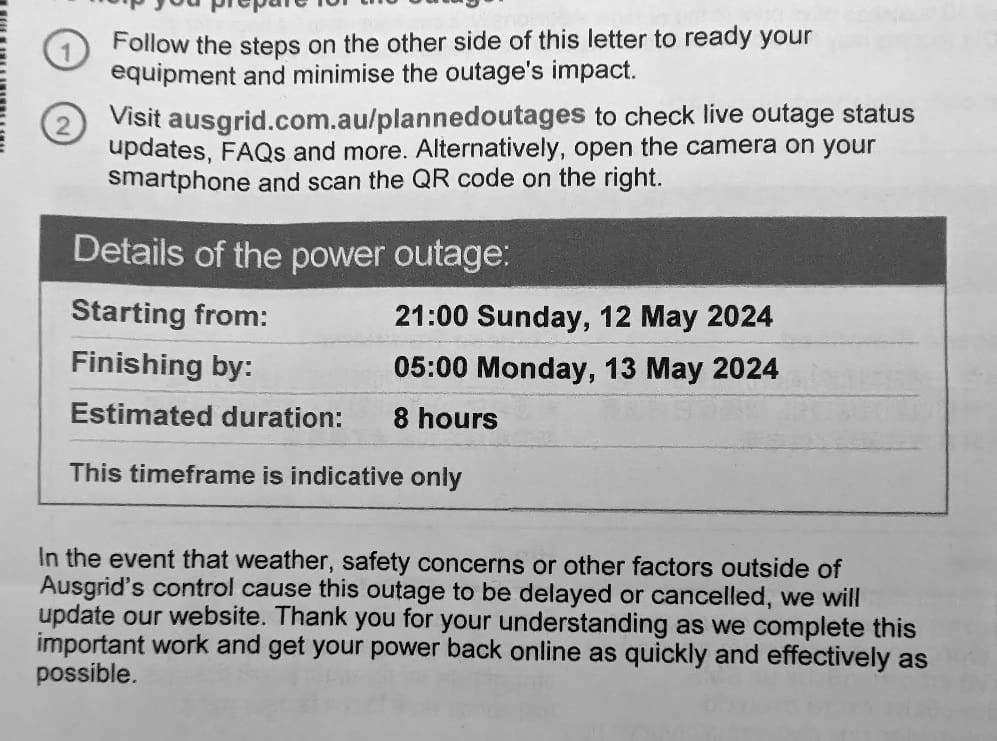
At a hefty 19.9kg, the $1,800 Anker 757 PowerHouse is at the very limit of what can be truthfully called portable.
I barely managed to carry it from the front of the house to the kitchen/dining area at the back. The hefty weight would have been easier for two people to manage.
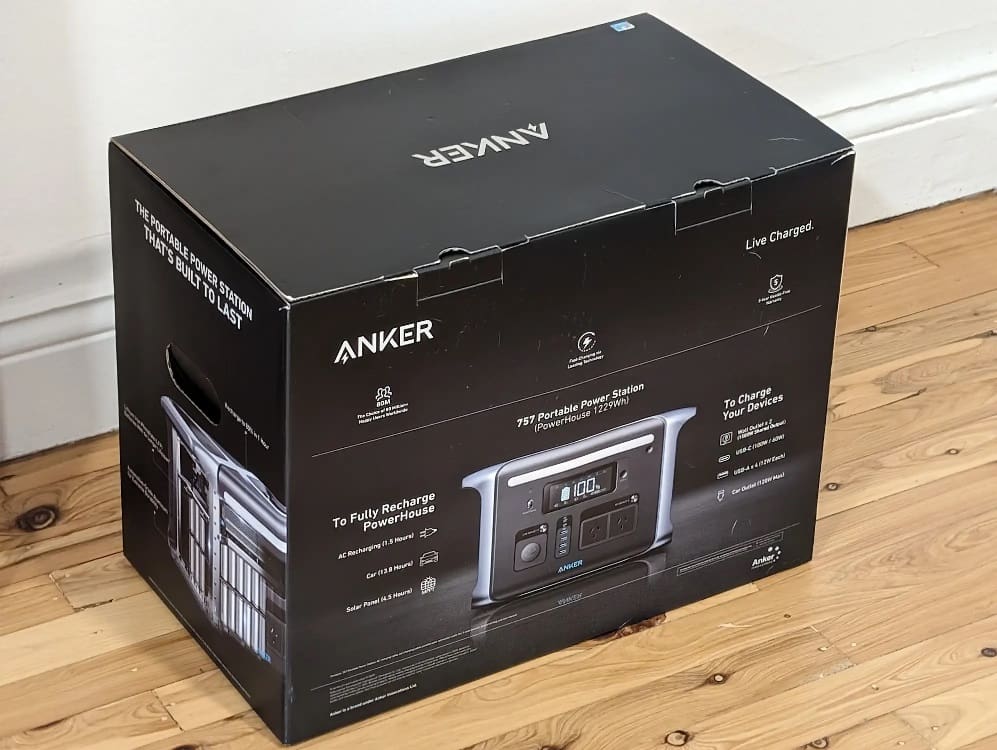
The Anker 757 PowerHouse weighs 19.9kg, testing the limits of what is considered “portable.”
It is rated to last 3000 battery cycles and still maintain 80% capacity. It has a 5-year warranty and many outlets (2 AC ports, 4 USB-A ports, 2 USB-C ports, and a 12V socket).
Large capacity units such as the 757 PowerHouse have the potential for dealing with brief blackouts, like the recent unexpected evening power cut in Western Sydney, and for much longer hours-long grid electricity disruptions and blackouts experienced by some parts of Australia.
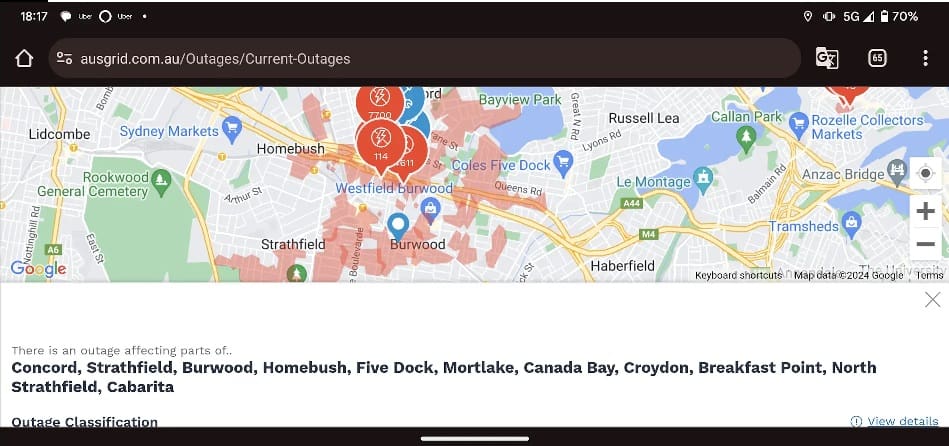
Unscheduled Ausgrid outages across Sydney’s west.
My home has almost 10kW of Jinko solar panels paired with an 8kW Sungrow inverter, but these could not assist because the Ausgrid planned outage started well after sunset.
I plugged our relatively new 520L fridge freezer into the 757 PowerHouse a minute after the outage started.
By dawn the next day, the food in our fridge was still pristine. The battery capacity only fell to 47% between 9:20 pm – 5:22 am when I woke up and plugged the fridge back into its usual wall power socket as the blackout had ended.
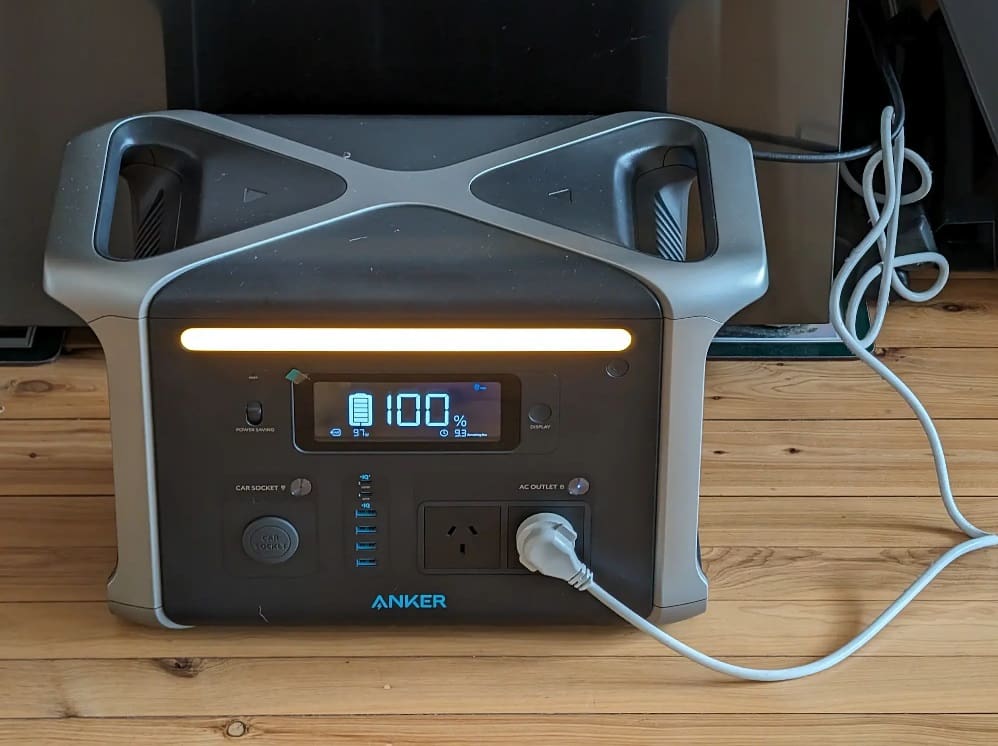
My fridge is plugged into the Anker 757 PowerHouse.
Lessons Learnt
I reckon if I had plugged the fridge into the 757 PowerHouse much earlier in the day and let it acclimatise while the battery was in UPS auto switchover mode plugged into a wall socket, then the total battery percentage depleted during the 8-hour outage would’ve been even less, as the fridge would’ve been in a steady low-use state by the time grid power got cut.
My Power Sensor monitor shows that our fridge typically uses 0.8-0.9kWh per day. So, the fridge could have functioned plugged into the 757 PowerHouse for just over a day if it had been in a lower steady-state power draw at the time of the blackout.
Smaller, more easily carried portable power stations can be used for many tasks away from home. My friend Stan uses his 256Wh Ecoflow River while camping overnight during long road trips to recharge his drone and other portable gadgets.
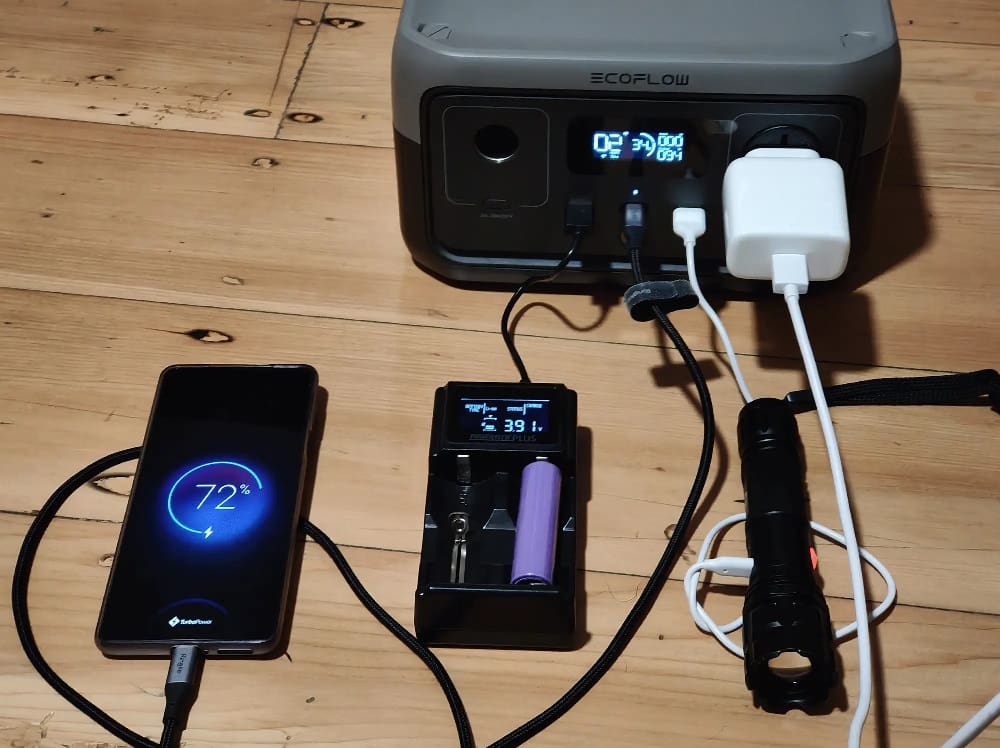
The 256Wh Ecoflow can power several mobile devices at the same time, making it ideal for camping.
When I tested induction cooking with the Laser NRGVault 1500 last year, the battery remaining time fluctuated as the power draw went up and down, from a low of 41 minutes to a high of 1.4 hours. This means you can use a portable power station with at least a 1kWh battery for portable cooking, but it will deplete the battery quickly.
Tasks like induction cooking that requires a power draw of several hundred or 1000kW or more would require you to cart multiple large-capacity power stations along in your car boot for an electrified glamping meal.
Realistically, running an induction cooktop from a vehicle-to-load (V2L) compatible electric car such as the Kia EV6 or MG4 would be more practical as these cars have much larger battery capacities of 50kWh – 77kWh depending on the model.
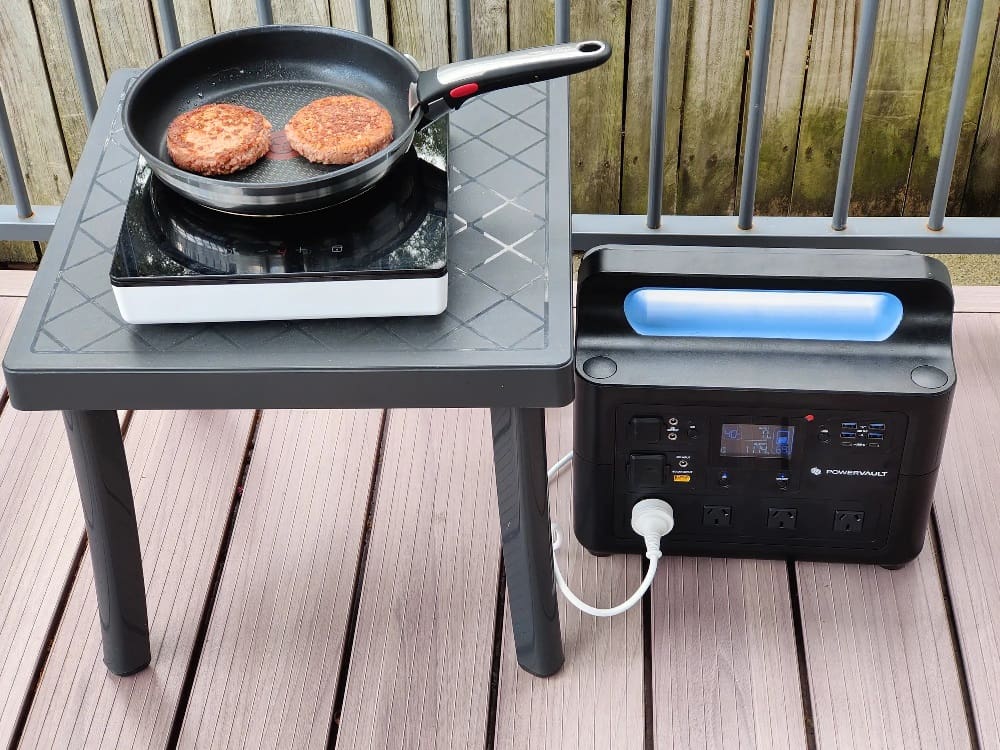
The NRGVault PV1500 can even power a portable induction cooktop.
Portable Power Station Buyer’s Guide
Specifications for the models mentioned in this article are included below to show that just because 2 batteries have similar storage capacity doesn’t mean they have similar prices, weights, warranties, or other key features.
| Model | Max Rated Power Output | Max Rated Power Input | Storage Capacity (kWh) | Price | Weight (kg) | $/kWh | Warranty (Years) | Warranted Charge Cycles (til capacity drops to 80%) |
|---|---|---|---|---|---|---|---|---|
| Anker 757 PowerHouse | 1500W | 1000W | 1.229 | $1,799.95 | 19.9 | $1,464.56 | 5 | 3000 |
| LASER PV1500 | 1500W | 1000W | 1.228 | $1,500 | 15.8 | $1,221.50 | 3 | 2500 |
| Ecoflow River 2 | 300W | 360W | 0.256 | $399 | 3.5 | $1,558.59 | 5 | 3000 |
| BLUETTI EB3A | 600W | 430W (AC+Solar) | 0.268 | $449 | 4.6 | $1,675.37 | 2 | 2500 |
The underlying technology used in the better quality portable battery stations is LiFePO4 / Lithium Iron phosphate (LFP), which is considered safer than Nickel Manganese Cobalt (NMC) batteries, which contain the controversial element Cobalt.
If you need to recharge quickly, check the promised time. Plugged into a standard household power socket, the 757 PowerHouse can recharge from flat to 80% in just 1 hour, which is an impressive half an hour faster than a similar capacity Laser NRGVault power station that I tested last year.
Check the promised number of battery cycles the manufacturer promises. As an example, my small Ecoflow River 2 (256Wh) is rated to 3000+ battery cycles before capacity drops to 80%, whereas competitor BLUETTI EB3A is only rated to 2500+ battery cycles.
These gadgets are not cheap, so I suggest choosing one with a long warranty. For example, the Anker 757 PowerHouse has a 5-year warranty, whereas a competing brand of similar capacity, the Laser NRGVault 1500, has only a 3-year warranty.
Buy a portable power station in person or online from a reputable Australian retail or manufacturer-direct store. This is not the kind of gadget you want to buy from Aliexpress.
Sales are relatively regular, e.g., EOFY, Christmas, etc., so if you can wait until then, you can spend less money on a good portable power station.
Original Source: https://www.solarquotes.com.au/blog/guide-to-portable-power-stations/

